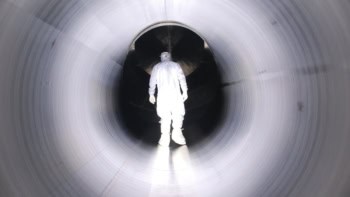Physicists have trapped 50 times more antiprotons than ever before at the Antiproton Decelerator (AD) at CERN. Moreover, Yasunori Yamazaki and co-workers from Japan, Hungary and CERN have also been able to extract antiproton beams with lower energies than achieved previously (N Kuroda et al. 2005 Phys. Rev. Lett. 94 023401). The ultraslow antiprotons could be used in a variety of experiments in fundamental physics.

The antiprotons are produced when high-energy protons collide with an iridium target, and are then decelerated from 3.5 GeV to 5.3 MeV by the AD, which delivers about 20 million antiprotons in short pulses or “shots” at 100 second intervals. However, these antiprotons are still too energetic for most experiments, including the “recombination” of antiprotons and positrons to form antihydrogen. Previous efforts to reduce the energy to the keV range by passing the beam through a “degrader” foil have only been able to capture about 25000 antiprotons in a typical AD shot.
Yamazaki and colleagues replaced the degrader foil with a radio-frequency quadrupole decelerator (RFQD) — a device that slows the particles with a series of electric fields. This allowed the team to decelerate between 5 and 9 million antiprotons to keV energies in a single AD shot.
The antiprotons were then injected into a multiring trap (MRT), where they were confined by a combination of an electric field and a strong magnetic field. Since the antiprotons have already been decelerated by the RFQD, it is easier to contain them in the MRT. The antiprotons can be cooled further through collisions with cold electrons that have been preloaded into the trap.
Yamazaki and co-workers obtained as many as 1.2 million cold antiprotons per AD shot using this method. Moreover, they were able to extract a small number of monoenergetic antiprotons with energies in the range 10 to 250 eV as the particles continued cooling.
“I believe we are about to open up a new research field with ultraslow antiproton beams”, says Yamazaki, who is based at RIKEN and the University of Tokyo. In addition to performing the most accurate ever tests of CPT (charge-parity-time) symmetry by comparing the spectra of hydrogen and antihydrogen atoms, the antiprotons could be used to study how antimatter interacts with gravity and to make the best ever measurement of the magnetic moment of the antiproton.




